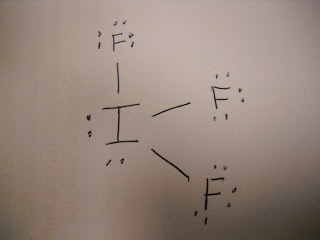Materials
- Copper Sulfate Pentahydrate
- Aluminum
- Water
- Bunsen Burner
- Scale
- round paper
- Flask
- Funnel
- Asbestos pad
- ring
- metal rod
- Safety Precaution- Make sure you put on safety glasses and wear an apron.
Procedure
First we fill a beaker with 75 to 100 ml of water. Then we started the Bunsen burner and set it up under the asbestos pad which is held by the ring on the metal rod. Then adding the beaker with water. We added 8.3 g of Copper Sulfate Pentahydrate to the water slowly and stirred it. While that is heating we measured out .45 g of Aluminum foil powder. Once the Copper Sulfate Pentahydrate is dissolved we added the Aluminum foil powder slowly and stired frequently. Keep stirring until the Aluminum can not be seen anymore this reaction will take about 15 to 20 minutes. Then we put filter paper in a funnel over the beaker and slowly poured the solution through the filter paper. After all the solution was filtered we took the filter paper and set it aside to dry. Later we weighed a piece of the same filter paper and subtracted that from the weight of the product and filter paper.
Conclusion
The weight of the product that was filtered out is .71 grams. Thing in this lab that could have messed with our results could have been the error in the amount of each substance we put in the water. The ratio could have changed our results. In order to get an actual answer we would have to repeat the lab multiple times and get and average.



















